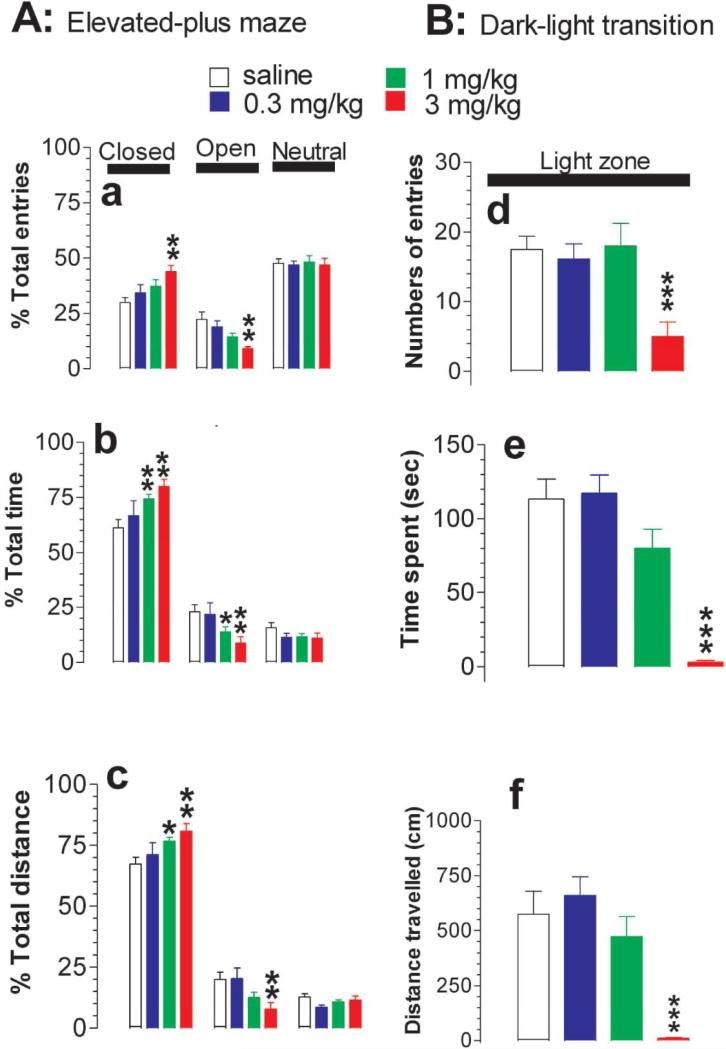Figure 3.
Effect of MDMA on anxiety-like behavior. Tests were conducted at ambient temperature of 22 °C. A, Elevated-plus maze (EPM) assay. Data are mean ± s.e.m (N = 8). MDMA produced an increase in the percentage of entries into (a), time spent in [b] and distance traveled in the closed arms (c) while the respective response was reduced in the open arms; B, Dark-light transition (DLT) assay. Data are mean ± s.e.m (N = 8). Likewise, MDMA evoked a decrease in numbers of entries into (d), time spent in (e) and distance traveled in the light arena (f). N = 8. *P < 0.05; **P<0.01; ***P<0.001 vs. control; unpaired student t- test.

